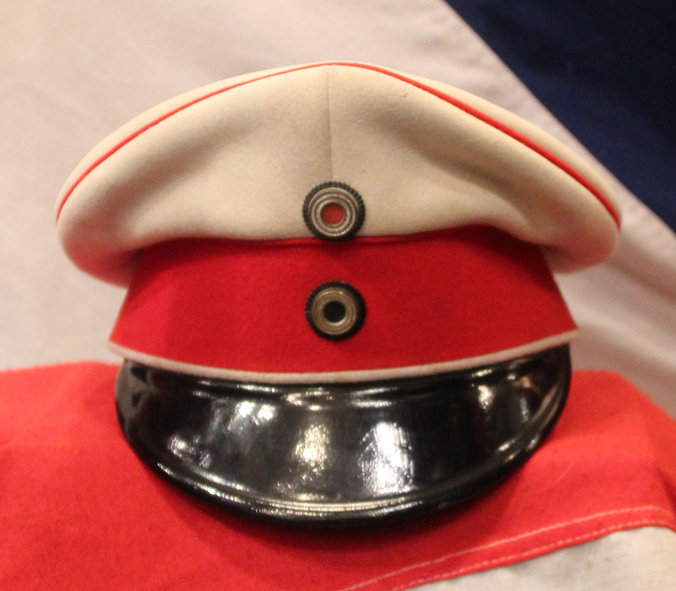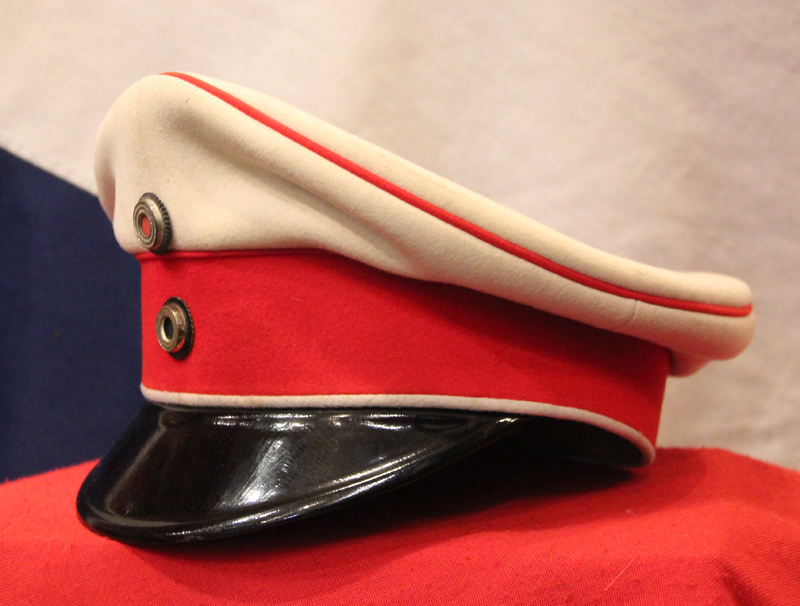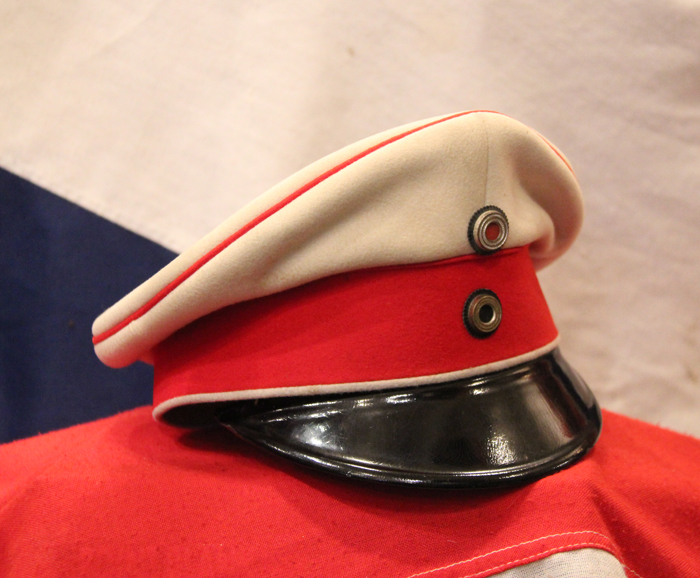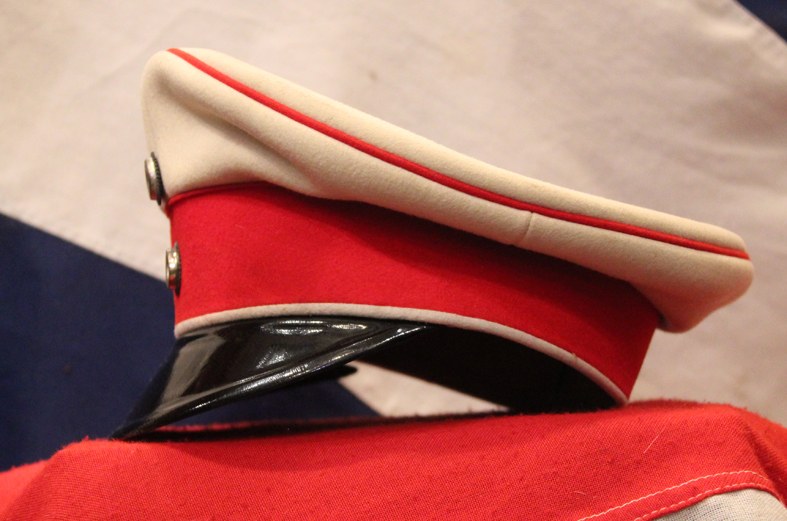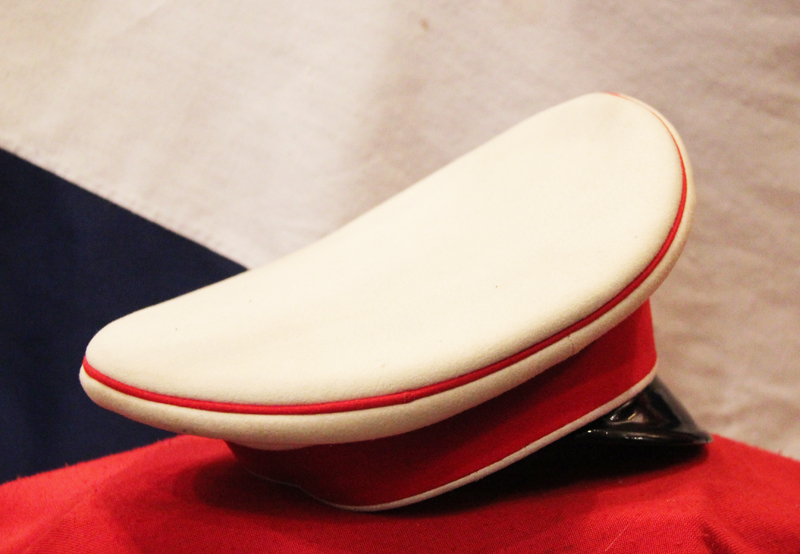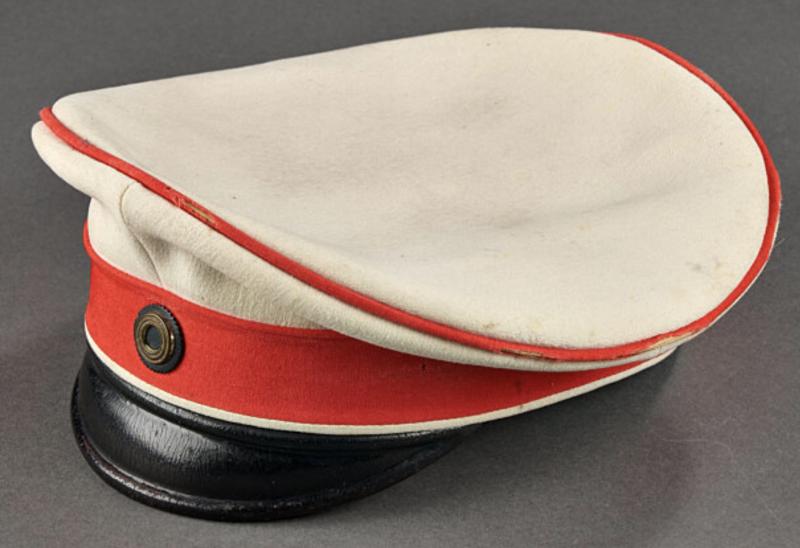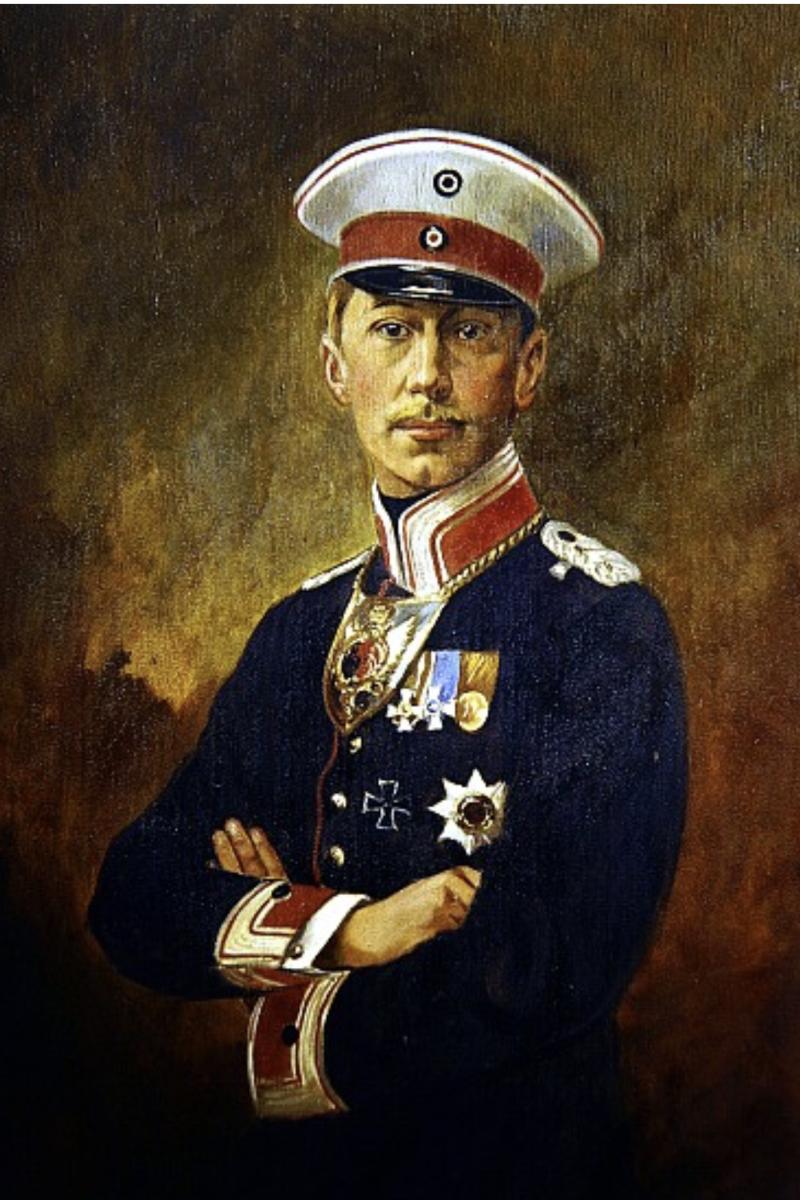A Most Rare Imperial German Elite ‘Gardes du Corps’ Officer’s Cap, In White and Scarlet, The Very Same General Officer’s Cap of The Regiment As Worn By Kaiser Wilhelm IInd & Crown Prince Wilhelm of Hohenzollern
In the gallery is a portrait of Crown Prince Wilhelm wearing his identical cap of a General of The Guarde du Corps.
The most elite regiment of Imperial Germany, with officer's drawn from the imperial Prussian nobility including the Kaiser himself. A dress cap for an officer, as worn by a General of the Gardes du Corps (Regiment der Gardes du Corps). In superb condition for age, not faded and crisp scarlet, some natural age use wear to the interior, no moth, with some stiching adrift on one side of the extreme peak corner. In parade dress they wore the most extravagent eagle mounted steel helmet.
This is only the second Gardes du Corps officers cap we have had in 20 years.
The Gardes du Corps was the personal bodyguard of the king of Prussia and, after 1871, of the German emperor (in German, the Kaiser). The unit was founded in 1740 by Frederick the Great. Its first commander was Friedrich von Blumenthal, who died unexpectedly in 1745; his brother Hans von Blumenthal, who, with the other officers of the regiment had won the Pour le M?rite in its first action at the battle of Hohenfriedberg, assumed command in 1747. Hans von Blumenthal was badly wounded leading the regiment in a successful cavalry charge in the battle of Lobositz and had to retire from the military. Unlike the rest of the Imperial German Army after German unification in 1871, the Garde du Corps was recruited nationally and was part of the 1st Guards Cavalry Division. The Regiment wore a white cuirassier uniform with certain special distinctions in full dress. These included a red tunic for officers in court dress and a white metal eagle poised as if about to rise from the bronze helmet on which it sat.
Other unique features of the regiment's full dress worn until 1914 included a red sleeveless Supraweste (survest) with the star of the Order of the Black Eagle on front and back and the retention of black iron cuirasses edged with red which had been presented by the Russian Tsar in 1814. These last replaced the normal white metal breastplates on certain special occasions. During the First World War, the Garde du Corps served in Belgium, Poland, Latvia and the Ukraine.
Photo 6 in the gallery is the personal and identical Garde du Corps general officer’s uniform cap of Kaiser Wilhelm IInd that sold for 12,500 € last year..
Made by Eduard Sachs, special class {sonderclaas}
Photo 7 of the portrait Crown Prince Wilhelm in his uniform of the Garde du Corps wearing this cap. Crown Prince Wilhelm of Hohenzollern, c.1916 (oil on canvas) by Nedomansky Studio, Vienna (fl.1914-18); Museo della Guerra di Rovereto, Trento, Italy
Code: 21480
1550.00 GBP

